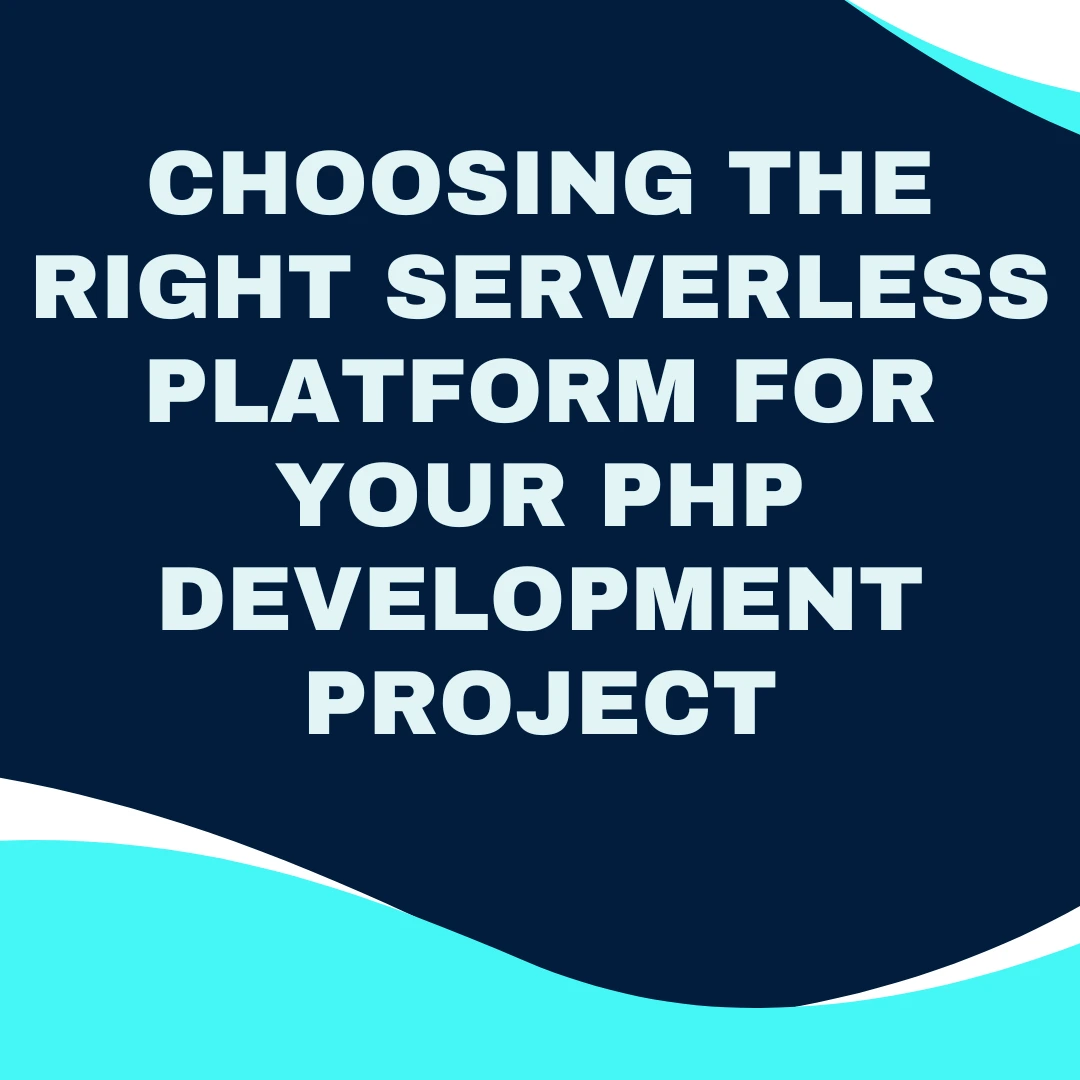The serverless architecture has taken the development world by storm, promising scalability, cost-efficiency, and faster development cycles. While exciting, the sheer number of serverless platforms available can be overwhelming for PHP developers embarking on their first serverless journey.
This guide delves into the technicalities of choosing the right serverless platform for your PHP project. We’ll explore crucial factors, popular options, and their unique strengths and weaknesses.
1What to Consider When Choosing a Serverless Platform:
1.Supported Runtimes: Not all serverless platforms natively support PHP. Look for platforms offering official or community-maintained PHP runtimes, ensuring seamless language integration and troubleshooting support.
2.Cost Model: Understanding the pricing structure is crucial. Some platforms charge based on execution time, memory usage, or a combination of both. Consider your project’s expected traffic and resource utilization to optimize costs.
3.Vendor Lock-in: While convenient, relying solely on a specific vendor’s platform can limit your choices in the future. Consider platforms with open-source options or those supporting multiple cloud providers.
4.Monitoring and Logging: Visibility into your serverless functions is essential for debugging and performance optimization. Platforms offering robust monitoring and logging tools simplify managing and maintaining your application.
5.Deployment and Development Experience: Look for platforms offering clear documentation, developer tools, and integrations with your existing CI/CD workflows for a smooth development experience.
6.Security and Compliance: Security is paramount. Choose platforms with built-in security features like authentication, authorization, and data encryption, especially for sensitive data or compliance-driven projects.
2Popular Serverless Platforms for PHP:
1.AWS Lambda: The industry leader, offering extensive language support (including custom runtimes), a mature ecosystem, and deep integration with other AWS services. However, its complex pricing structure and potential vendor lock-in require careful consideration.
2.Azure Functions: Another major player, featuring native PHP support, rich integration with Azure services, and a competitive pricing model. However, its community and adoption compared to AWS Lambda might be smaller.
3.Google Cloud Functions: A strong contender with native PHP runtime, competitive pricing, and integration with Google Cloud services. However, its community and feature set might be less mature compared to AWS and Azure.
4.OpenFaaS: An open-source serverless framework, offering portability across multiple cloud providers and on-premises deployments. Its flexibility and cost-effectiveness are attractive, but requires more hands-on setup and management.
5.Serverless PHP: Another open-source option designed specifically for PHP developers. Featuring easy deployment and a familiar framework experience, it might lack the broader feature set of cloud-native platforms.
3Beyond the Hype: Making an Informed Choice:
Choosing the right serverless platform depends heavily on your project’s specific needs and constraints. Conduct thorough research, identify your priorities, and carefully evaluate each platform based on the factors mentioned above. Don’t be afraid to experiment with different options and leverage community resources to get hands-on experience.
Additional Considerations:
- Existing Infrastructure:If you already use a specific cloud provider like AWS or Azure,their native serverless platform might offer smoother integration and cost optimization.
- Team Skills and Expertise:Consider your team’s understanding and experience with different platforms and programming languages.
- Scalability Requirements:Analyze your project’s anticipated growth and choose a platform capable of scaling automatically to meet demand. Remember, the serverless landscape is constantly evolving. Stay updated on emerging trends, experiment with new platforms, and adapt your choices as your project grows and matures.


